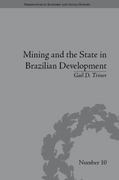Question
53.A monopolist faces the inverse demand function described by p =50-4 q , where q is output. The monopolist has no fixed cost and his
53.A monopolist faces the inverse demand function described byp=50-4q, whereqis output. The monopolist has no fixed cost and his marginal cost is $5 at all levels of output. Which of the following expresses the monopolist's profits as a function of his output?
| a. | 50-4q-5 |
| b. | 50-8q |
| c. | 45q-4q2 |
| d. | 50q-4q2-5 |
| e. | None of the above. |
____55.The demand for a monopolist's output is 6,000/(p+7)2, wherepis its price. It has constant marginal costs equal to $5 per unit. What price will it charge to maximize its profits?
| a. | $33 |
| b. | $12 |
| c. | $26 |
| d. | $17 |
| e. | $5 |
____57.A profit-maximizing monopolist faces a downward-sloping demand curve that has a constant elasticity of-3. The firm finds it optimal to charge a price of $12 for its output. What is its marginal cost at this level of output?
| a. | $5 |
| b. | $25 |
| c. | $24 |
| d. | $8 |
| e. | $12 |
59.A monopolist has the total cost functionc(q)=800+8q. The inverse demand function is 80-6q, where prices and costs are measured in dollars. If the firm is required by law to meet demand at a price equal to its marginal costs,
| a. | thefirm's profits will be zero. |
| b. | thefirm will lose $400. |
| c. | thefirm will make positive profit but not as much profit as it would make if it were allowed to choose its own price. |
| d. | thefirm will lose $800. |
| e. | thefirm will lose $480. |
____61.In Problem 1, if demand in the United States is given byQ1=7,200-300p1, where p1is the price in the United States, and if the demand in England is given by 3,600-200p2, wherep2is the price in England, then the difference between the price charged in England and the price charged in the United States will be
| a. | $3. |
| b. | $6. |
| c. | $0. |
| d. | $13. |
| e. | $9. |
____65.A monopolist has a constant marginal cost of $2 per unit and no fixed costs. He faces separate markets in the United States and England. He can set one pricep1for the U.S. market and another pricep2for the English market. If demand in the United States is given byQ1=6,000-600p1and demand in England is given byQ2=2,400-400p2, then the price in the United States will
| a. | belarger than the price in England by $2. |
| b. | besmaller than the price in England by $2. |
| c. | equalthe price in England. |
| d. | belarger than the price in England by $4. |
| e. | besmaller than the price in England by $4. |
Step by Step Solution
There are 3 Steps involved in it
Step: 1

Get Instant Access to Expert-Tailored Solutions
See step-by-step solutions with expert insights and AI powered tools for academic success
Step: 2

Step: 3

Ace Your Homework with AI
Get the answers you need in no time with our AI-driven, step-by-step assistance
Get Started


